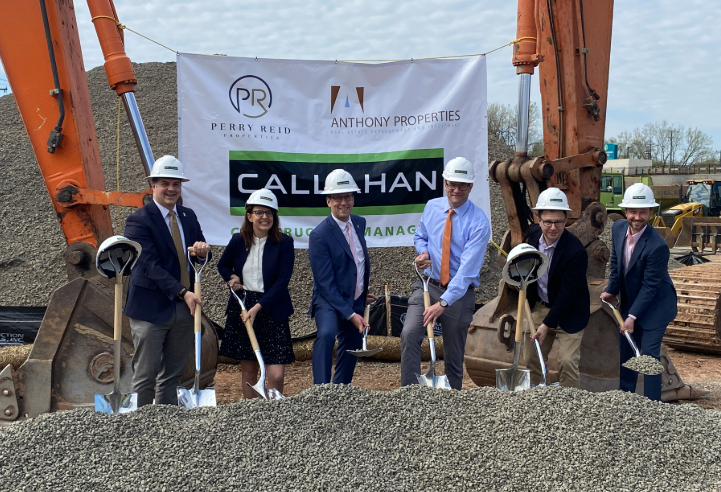News: Connecticut
Posted: February 14, 2008
Valuation of facade easements - Methodology and trends
Facade easements are essentially grants or donations of historic property to a qualified organization for the purpose of preserving the historic fabric and/or character of a building's facade. The easement serves to preserve the character of that building into perpetuity with the burden of preserving such building being borne by the grantor of the easement.
The obvious benefit is in preserving the historic nature of a property with the real boon being to the grantor, who typically is entitled to a tax benefit which is recognized as a "charitable tax deduction" by the IRS.
The vehicle of a facade easement seemingly has been used sparingly in New England despite a large population of historic structures. This trend may be reversing as more taxpayers, developers and preservationists become aware of the tax advantages and the benefits that can often make the restoration and maintenance of a historic structure more feasible.
Of course, when an avenue for tax benefits exists often come abuses of the same. There have been many of a story of taxpayers claiming deductions for as much as 50% of the value of say a brownstone in New York where values often reach into the stratosphere. The Internal Revenue Service has often challenged these deductions and as a result made strides in revising the language governing charitable deductions of easements.
New Developments in the Valuation of Historic Facade Easements
The tax benefits of preservation easements date back to 1969 with major revisions to the Internal Revenue Service Code via the Tax Reform Act of 1986. Over the past 20 years the language regarding preservation easements and allowable provisions for tax deductions has remained virtually unchanged. On August 17, 2006, as part of the omnibus pension bill, H.R. 4 was signed into law by the President as Public Law 109-280.
The bill included sweeping new language that enhanced the language of the tax code, made reporting requirements more stringent but at the same time expanded the availability of tax deductions.
The following is a summary of the new rules as they relate to buildings in registered historic districts:
* Disallowing deductions for preservation easements that fail to protect the entire exterior of a property;
* Prohibiting deductions for easements that allow changes that are incompatible with a building's historic character;
* Requiring the donor and done to certify under perjury that the easement-holding organization is qualified to accept easements, and had the resources and commitment to manage and enforce the easement;
* Requiring the owner to provide the IRS with more detailed substantiation to prove the value of the donation;
* Imposing a new filing fee of $500 for easement deductions more than $10,000.
* Lowering thresholds for overvaluation penalties for donors, and imposing new overvaluation penalties for appraisers
* Imposing new qualification standards for appraisals and appraisers.
Major benefits of the bill include:
* The law expands the availability of the charitable tax deduction for easements donated in 2006 and 2007.
* The law increases the annual amount deductible for most taxpayers from 30% to 50% of a taxpayers contribution base (adjusted gross income less net operating loss carrybacks)
Establishing a Value for an Easement - Historical Benchmarks
In theory, the encumbrance of a facade easement results in a diminution in market value to the encumbered property. The percentage of diminution is driven by two primary factors. Firstly, the extent of the restrictions and responsibilities contained in the easement agreement and secondly, the level of detail and type of material that the building consists of. The greater the restrictions and/or greater the detail that the building has, the greater the percentage of diminution.
This appraiser has reviewed numerous facade easements with the majority of the instruments in plain and simple language providing restrictions that prohibit changes to the building's facade.
The typical easement also requires the grantor to pay for periodic inspections and to maintain the building to a specific standard, keeping a certain maintenance level and using like materials for replacement and repairs.
A typical facade easement creates a number of impositions that can be summarized as follows:
* Limitation of development opportunities. The typical facade easement would prohibit the construction of any additions or to make any changes to the exterior of the building.
* Higher ongoing operating costs. Facade easements impose a higher level of maintenance which translates into greater expenses. Such costs include higher ongoing maintenance by product of maintaining what is typically a material intensive design and construction. Materials such as limestone, terra cotta and detailed wood facades are much more costly to build and maintain in comparison to the predominate building materials and standards used today.
* Periodic inspection costs are typically borne by the grantor.
* If the building were damaged or destroyed, the facade must be restored to the original condition. As a result, the grantor would be required to carry greater insurance to fulfill not just replacement, but a reproduction of the current detail which is far more costly in today's market.
The problem typically faced by the appraiser in estimating an appropriate diminution rate is the lack of empirical information also known as market-derived information. Many an appraiser, including myself have often relied upon published tax cases where courts have essentially determined diminution rates.
Two of the more significant cases that have been used in establishing the value of facade easements have been:
Hillborn vs. Commissioner, a 1986 decision where 10% of the value of the property (as renovated) was allowed. This case involved an apartment building in the historic French Quarter of New Orleans
Griffin vs. Commissioner, a 1989 decision where a 20% deduction was allowed.
Subsequent decisions have allowed deductions ranging from 12% to 15%.
Marc Nadeau, SRA is an appraiser and developer, Nadeau & Associates, Guilford, Conn.
Tags:
Connecticut
MORE FROM Connecticut
Highcap Group brokers $41.1 million sale of two building multifamily portfolio
Norwalk, CT Highcap Group has completed the sale of two luxury multifamily properties with a total of 120 units for a combined purchase price of $41.4 million.








